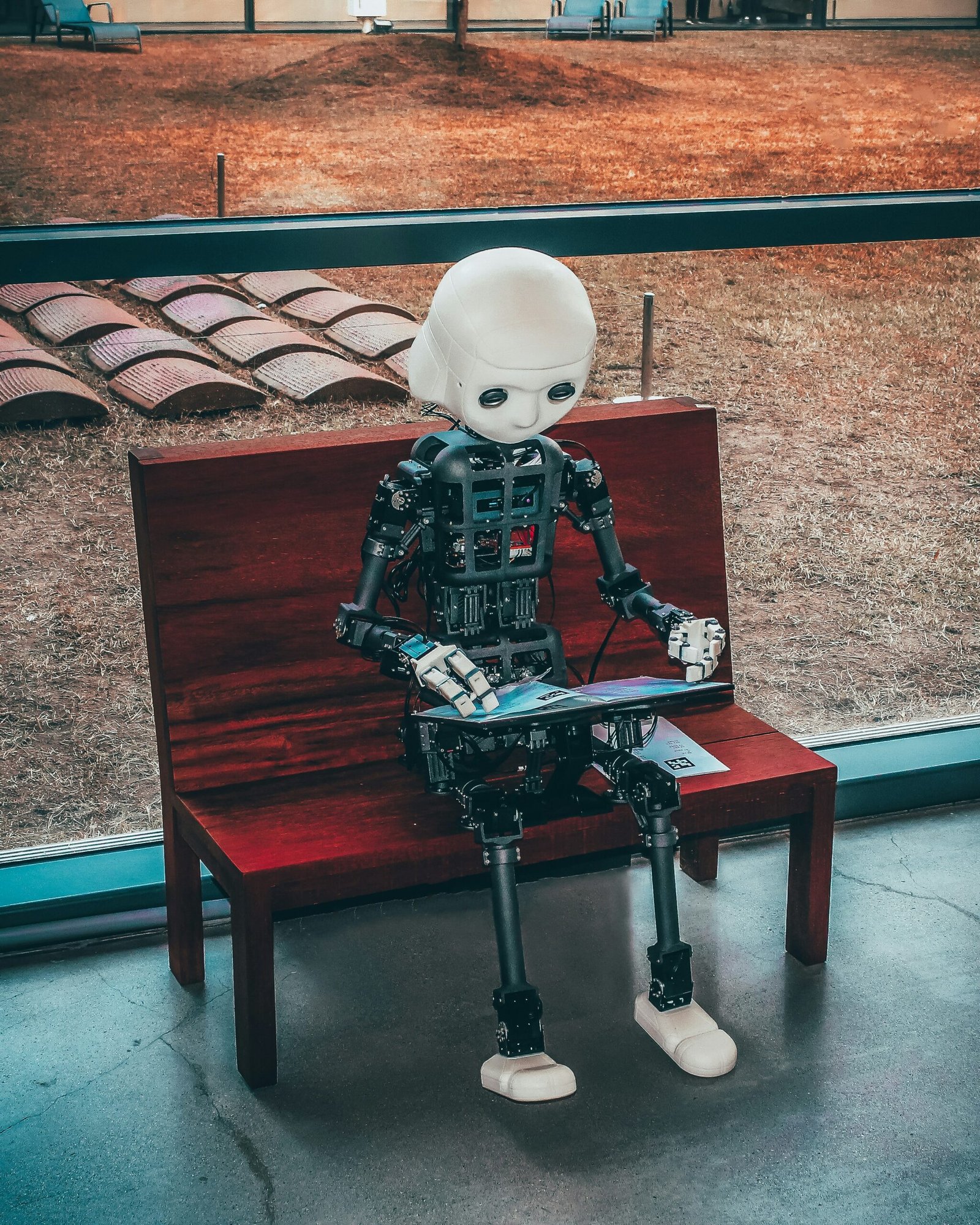Imagine walking into a store where the shelves rearrange themselves based on your shopping history, or a chatbot knows you better than your best friend. Welcome to the retail industry, reimagined by Artificial Intelligence (AI) and Machine Learning (ML). These technologies are transforming retail in ways we never thought possible—from predicting what’s going to be in your cart next week to ensuring you never have to deal with out-of-stock woes again. If you’ve ever binge-shopped during a midnight sale or marveled at Netflix’s eerie recommendation accuracy, you’ve already encountered AI and ML at work. Let’s dive into how these technologies are reshaping retail and the exciting career opportunities they’re opening up.
The AI & ML Revolution in Retail
Gone are the days when shopping was just about walking into a store and picking up what’s on your list (or not on it, let’s be honest). AI and ML are helping retailers optimize everything—from inventory management to customer experience. Here’s how:
1. Personalized Shopping Experiences
Remember when you browsed for sneakers online, and suddenly, ads for sneakers haunted you on every website? That’s AI working its magic. By analyzing your browsing history, purchase behavior, and even the time you spend on a product page, AI creates hyper-personalized shopping experiences. Think of it as having a personal shopper who never gets tired.
2. Inventory Management
Ever wondered how your favorite store always has the exact item you want? Retailers use ML algorithms to predict demand and manage stock levels. These systems analyze past sales data, seasonal trends, and even weather forecasts to ensure shelves are stocked with the right products.
3. Chatbots and Virtual Assistants
“Hi, how can I help you?” says the chatbot, often faster and more polite than a human. AI-powered chatbots assist customers in real-time, answering questions, suggesting products, and even handling returns. Bonus? They’re available 24/7 and never take coffee breaks.
4. Fraud Detection
ML algorithms are the Sherlock Holmes of the digital retail world. They monitor transactions, flagging anything that looks suspicious. This protects both customers and retailers from fraud.
5. Dynamic Pricing
Ever notice how flight ticket prices can change while you’re still deciding? Retailers use similar AI models to adjust prices based on demand, competition, and customer behavior, ensuring they stay competitive while maximizing profits.
Career Scope in AI and ML for Retail
The retail industry’s love affair with AI and ML isn’t slowing down anytime soon. This means tons of career opportunities for tech enthusiasts. Let’s explore some of the most in-demand roles.
1. Data Scientist
Role: Data scientists are the alchemists of the tech world. They sift through mountains of data to extract actionable insights.
Key Responsibilities:
- Analyzing customer behavior
- Optimizing pricing strategies
- Building recommendation systems
Skills Needed: Python, R, SQL, machine learning algorithms, and data visualization tools like Tableau.
2. AI/ML Engineer
Role: AI/ML engineers develop the algorithms that power personalization engines, chatbots, and fraud detection systems.
Key Responsibilities:
- Designing and deploying ML models
- Developing AI-driven tools
- Improving existing systems
Skills Needed: Deep learning frameworks (TensorFlow, PyTorch), cloud computing (AWS, Azure), and programming languages like Python and Java.
3. Business Analyst (AI/ML Focus)
Role: These professionals bridge the gap between technical teams and business stakeholders.
Key Responsibilities:
- Identifying AI/ML use cases
- Analyzing market trends
- Measuring ROI of AI/ML initiatives
Skills Needed: Strong analytical skills, domain knowledge in retail, and familiarity with AI tools.
4. Natural Language Processing (NLP) Specialist
Role: NLP specialists focus on creating smarter chatbots and virtual assistants.
Key Responsibilities:
- Developing conversational AI systems
- Enhancing voice search functionality
- Improving language translation tools
Skills Needed: NLP libraries (spaCy, NLTK), deep learning, and text mining.
5. Computer Vision Engineer
Role: Ever heard of Amazon Go? Computer vision engineers make such cashier-less stores a reality.
Key Responsibilities:
- Implementing image recognition systems
- Developing algorithms for object detection
- Enhancing in-store analytics
Skills Needed: OpenCV, deep learning, and image processing.
Salary Expectations
Let’s get to the juicy part—how much can you earn? Salaries in AI and ML roles vary based on experience, location, and the complexity of the role. Here’s a general breakdown:
Entry-Level Roles (0-2 years of experience):
- Data Scientist: $70,000 – $90,000 per year
- AI/ML Engineer: $80,000 – $100,000 per year
- Business Analyst (AI/ML Focus): $60,000 – $80,000 per year
Mid-Level Roles (3-5 years of experience):
- Data Scientist: $100,000 – $130,000 per year
- AI/ML Engineer: $110,000 – $140,000 per year
- NLP Specialist: $100,000 – $120,000 per year
Senior-Level Roles (5+ years of experience):
- Data Scientist: $140,000 – $180,000 per year
- AI/ML Engineer: $150,000 – $200,000 per year
- Computer Vision Engineer: $130,000 – $170,000 per year
Note: These figures are approximate and can vary widely based on geography and company size. For instance, salaries in tech hubs like Silicon Valley or Bengaluru tend to be higher.
How to Break Into AI and ML in Retail
So, you’ve decided to dive into the world of AI and ML. Great choice! Here’s how you can get started:
- Learn the Basics: Master foundational skills like Python, statistics, and basic machine learning algorithms.
- Specialize in Retail: Understand retail-specific problems like demand forecasting, customer segmentation, and dynamic pricing.
- Build a Portfolio: Showcase projects like building a recommendation system or designing a chatbot for a hypothetical retail business.
- Earn Certifications: Platforms like Coursera, edX, and Udacity offer certifications in AI and ML. Look for programs tailored to retail applications.
- Network: Join industry forums, attend meetups, and connect with professionals on LinkedIn to stay updated on trends and opportunities.
The Future of AI and ML in Retail
The future looks bright (and a little sci-fi) for AI and ML in retail. Here are some trends to watch:
- Voice Commerce: Shopping via voice assistants like Alexa and Google Assistant is set to grow.
- Augmented Reality (AR): Virtual try-ons and interactive store layouts will make shopping even more immersive.
- Predictive Analytics: Retailers will get even better at predicting what customers want before they even know it.
- Sustainability: AI will help optimize supply chains to reduce waste and promote eco-friendly practices.
Wrapping Up
AI and ML are not just buzzwords; they’re the backbone of modern retail. From creating seamless shopping experiences to opening up lucrative career paths, these technologies are revolutionizing the industry. So, whether you’re a tech enthusiast looking to enter the field or a curious shopper marveling at how your favorite brand always knows what you need, one thing is clear—the future of retail is intelligent, and it’s here to stay. Now, if only AI could figure out why we always forget to buy milk!









